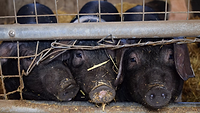USDA Discovers 33 New Mycotoxin-Producing Fungi Species

Credit: hoanggiahuy via Pexels
The U.S. Department of Agriculture’s Agricultural Research Service (USDA’s ARS) has discovered 33 new species of mycotoxin-producing fungi belonging to the genus Fusarium.
According to ARS scientists, many Fusarium species produce harmful secondary metabolites in plant tissues including trichothecenes, which are among the mycotoxins of greatest concern to food safety and human health. Not only do mycotoxins present an immediate threat to livestock and humans as they can cause illness, they may also be carcinogenic if consumed regularly over a prolonged period.
Notably, some of the fungal Fusarium species can cause severe cases of Fusarium Head Blight (FHB), a disease that affects crucial crops such as cereal. The FHB-causing fungi infect wheat florets, causing fungi and toxins to accumulate in wheat seeds. If the seeds are harvested and ground into flour, it can cause the toxic contamination of entire loads of grain.
The new fungal species are being held at the ARS Mycotoxin Prevention and Applied Microbiology Research unit in Peoria, Illinois, which is part of the National Center for Agricultural Utilization Research (NCAUR). Within NCAUR lies the ARS Culture Collection, which is one of the largest public collections of microbes in the world, housing about 98,000 strains of bacteria, yeast, and fungi. The ARS Culture Collection serves as a comprehensive collection of specimens that researchers can use to breed resistant crops, develop tools to monitor pathogens, detect and mitigate the spread of new invasive pathogens, and evaluate possible chemical and biological controls. The discovery of the 33 new Fusarium species enables new avenues of research to combat mycotoxins and FHB.
Looking for a reprint of this article?
From high-res PDFs to custom plaques, order your copy today!








